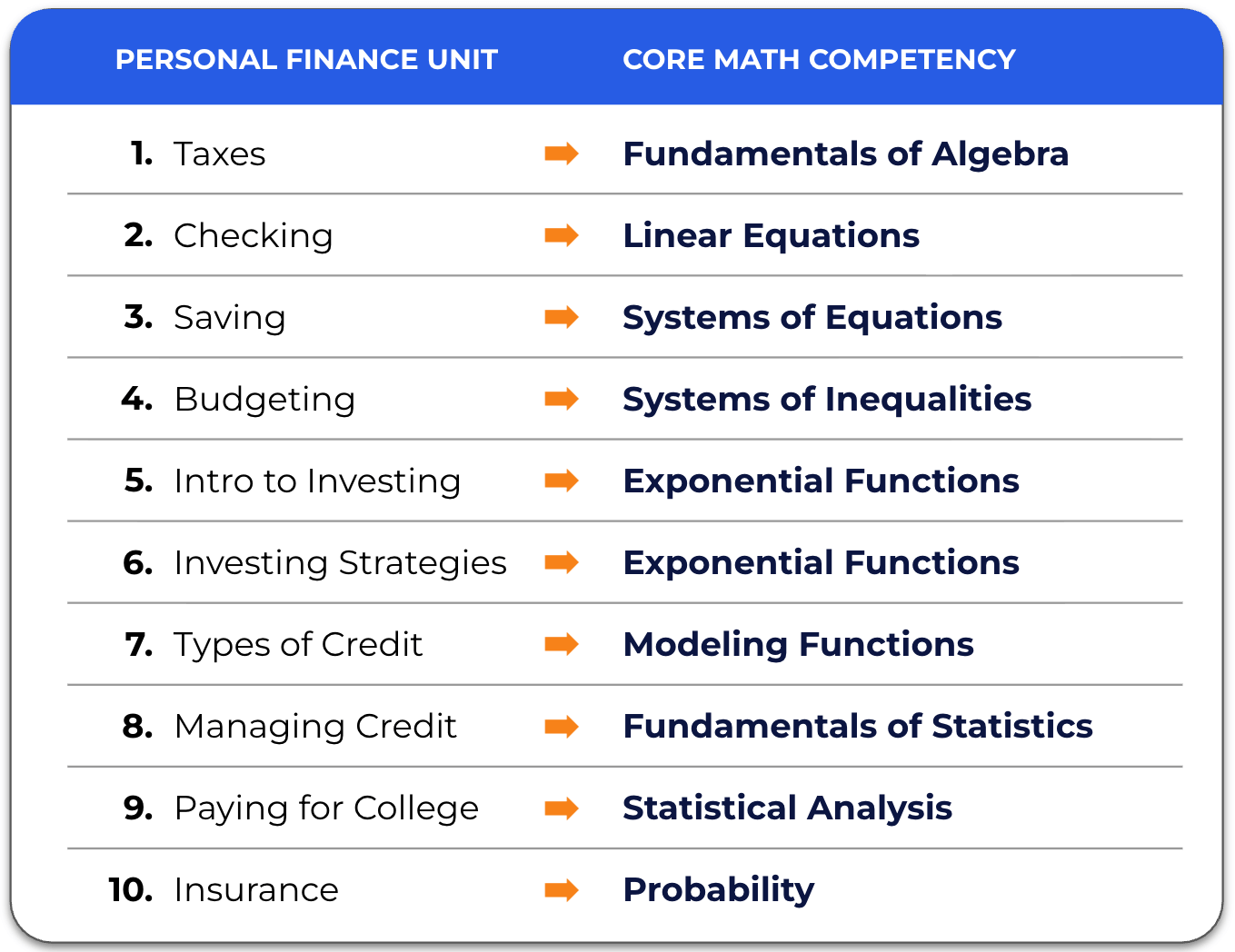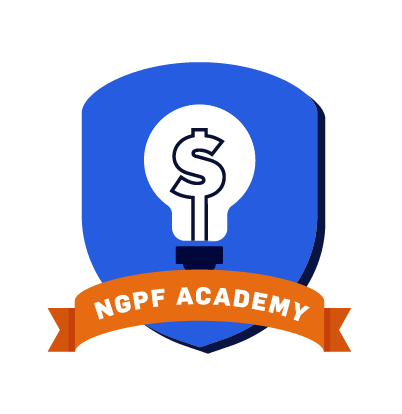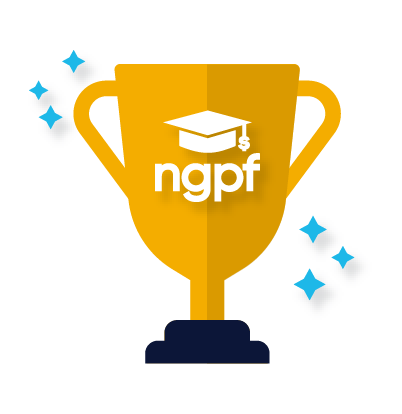Math Monday: Ordering the Financial Algebra Units
Let's unpack an FAQ for the Financial Algebra Course: Can I adjust the order of the units?
The Short Answer: Yes
YES, you can rearrange the Financial Algebra units. BUT it will take a little tinkering.
We generally recommend following the standard course progression because the course content builds. But of course, NGPF is designed to be customizable for your classroom. As a teacher, you are the expert on your own classroom and students.
The course is designed cumulatively. As students progress, they build on both their math and personal finance skills from previous units. This allows for a more cohesive and in-depth learning experience than practicing isolated math skills; however, it means the course can be tricky to rearrange.
First: The Sequence
The Financial Algebra Course organizes the many financial applications of traditional Algebra skills into a cohesive narrative: one semester in 10 units.

Broadly, the math topics fall into three categories: linear functions, exponential functions, and statistics & probability.
How to Rearrange the Units
Things to consider
- You have more flexibility if your students already have a strong foundation in Algebra I skills
- Some units pair well together, like the two units about Investing
- Review the Unit Plans or Unit Exams to preview a unit's content
- If you want to cover a personal finance topic earlier, you may need to teach prerequisite math skills. For example, if you move the Intro to Investing & Exponential Functions unit earlier, you might need to review linear functions first.
- You could also decrease the math rigor for that unit by using the Level 1 Application Problems for each math lesson.
- As always, you can make a copy of any resource to customize it for your class
Some units will be easier to move because the math skills are simpler or independent of the rest of the course. For example:
- Taxes & Fundamentals of Algebra
- Insurance & Probability
Some units will be harder to move because the content builds directly with neighboring units. For example:
- Types of Credit and Managing Credit
- Intro to Investing and Investing Strategies
- Checking, Saving, and Budgeting
Spotlight on Paying for College
If you teach seniors, you might be looking to cover Paying for College earlier in the school year, so students are prepared to navigate the financial aid process.
Here’s what you need to know in order to teach Paying for College earlier in the course sequence:
- There are no algebra skills required for this unit
- Students should know how to create and analyze a box plot
- Students should be able to explain what simple interest is and use the simple interest formula
- Some prior knowledge of regression modeling and correlation is assumed. Links to prior Financial Algebra lessons that teach these skills are included in the Interpreting Regressions lesson. You can also choose to skip this lesson since it will not scaffold to later lessons in the unit.
How Can I Add Extra Math Practice?
As you plan your course sequence, here are some suggestions if you’re anticipating that your students will need extra math practice:
- Use more levels of the Application Problems: Instead of having students choose one level of the Application Problems, build in class time to complete multiple levels.
- Add in MATH activities: These self-contained activities are about 30 minutes and include a worked example with an Edpuzzle, practice problems, and reflection questions.
Bonus: check out 3 ways you can use Financial Algebra in your classroom!
About the Author
Kathryn Dawson
Kathryn (she/her) is excited to join the NGPF team after 9 years of experience in education as a mentor, tutor, and special education teacher. She is a graduate of Cornell University with a degree in policy analysis and management and has a master's degree in education from Brooklyn College. Kathryn is looking forward to bringing her passion for accessibility and educational justice into curriculum design at NGPF. During her free time, Kathryn loves embarking on cooking projects, walking around her Seattle neighborhood with her dog, or lounging in a hammock with a book.
SEARCH FOR CONTENT
Subscribe to the blog
Join the more than 11,000 teachers who get the NGPF daily blog delivered to their inbox:
MOST POPULAR POSTS









